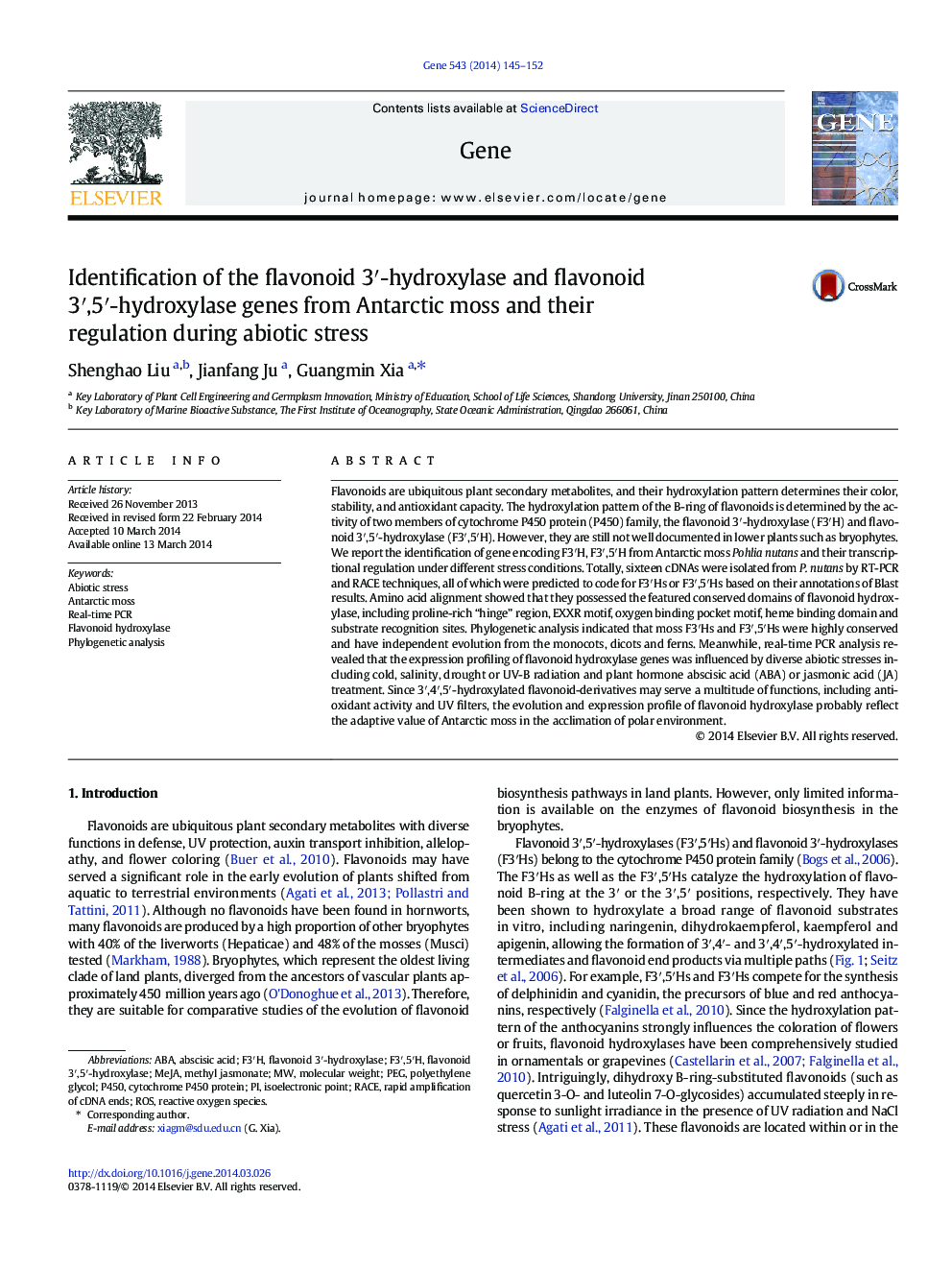| Article ID | Journal | Published Year | Pages | File Type |
|---|---|---|---|---|
| 2816361 | Gene | 2014 | 8 Pages |
•Sixteen F3′H and F3′,5′H genes are isolated from Antarctic mosses Pohlia nutans.•We firstly confirm that bryophytes generally have flavonoid 3′,5′-hydroxylase genes.•We infer that the divergence of F3′Hs and F3′,5′Hs occurs at the stage of bryophytes.•The mRNA levels of F3′H and F3′,5′H are influenced by diverse abiotic stresses.•We propose that F3′Hs and F3′,5′Hs were involved in mosses adapting to polar environment.
Flavonoids are ubiquitous plant secondary metabolites, and their hydroxylation pattern determines their color, stability, and antioxidant capacity. The hydroxylation pattern of the B-ring of flavonoids is determined by the activity of two members of cytochrome P450 protein (P450) family, the flavonoid 3′-hydroxylase (F3′H) and flavonoid 3′,5′-hydroxylase (F3′,5′H). However, they are still not well documented in lower plants such as bryophytes. We report the identification of gene encoding F3′H, F3′,5′H from Antarctic moss Pohlia nutans and their transcriptional regulation under different stress conditions. Totally, sixteen cDNAs were isolated from P. nutans by RT-PCR and RACE techniques, all of which were predicted to code for F3′Hs or F3′,5′Hs based on their annotations of Blast results. Amino acid alignment showed that they possessed the featured conserved domains of flavonoid hydroxylase, including proline-rich “hinge” region, EXXR motif, oxygen binding pocket motif, heme binding domain and substrate recognition sites. Phylogenetic analysis indicated that moss F3′Hs and F3′,5′Hs were highly conserved and have independent evolution from the monocots, dicots and ferns. Meanwhile, real-time PCR analysis revealed that the expression profiling of flavonoid hydroxylase genes was influenced by diverse abiotic stresses including cold, salinity, drought or UV-B radiation and plant hormone abscisic acid (ABA) or jasmonic acid (JA) treatment. Since 3′,4′,5′-hydroxylated flavonoid-derivatives may serve a multitude of functions, including antioxidant activity and UV filters, the evolution and expression profile of flavonoid hydroxylase probably reflect the adaptive value of Antarctic moss in the acclimation of polar environment.
